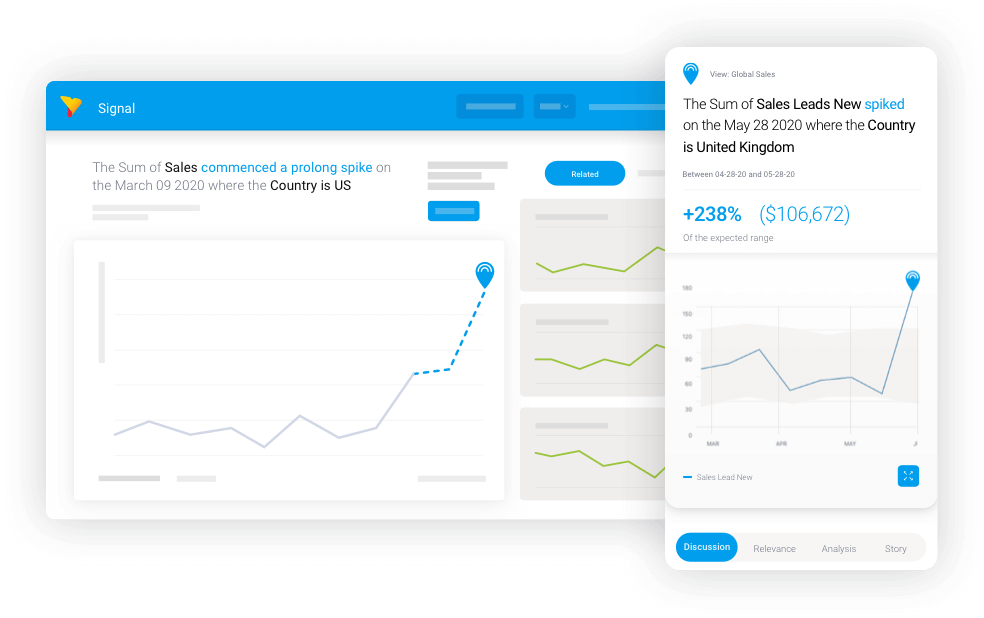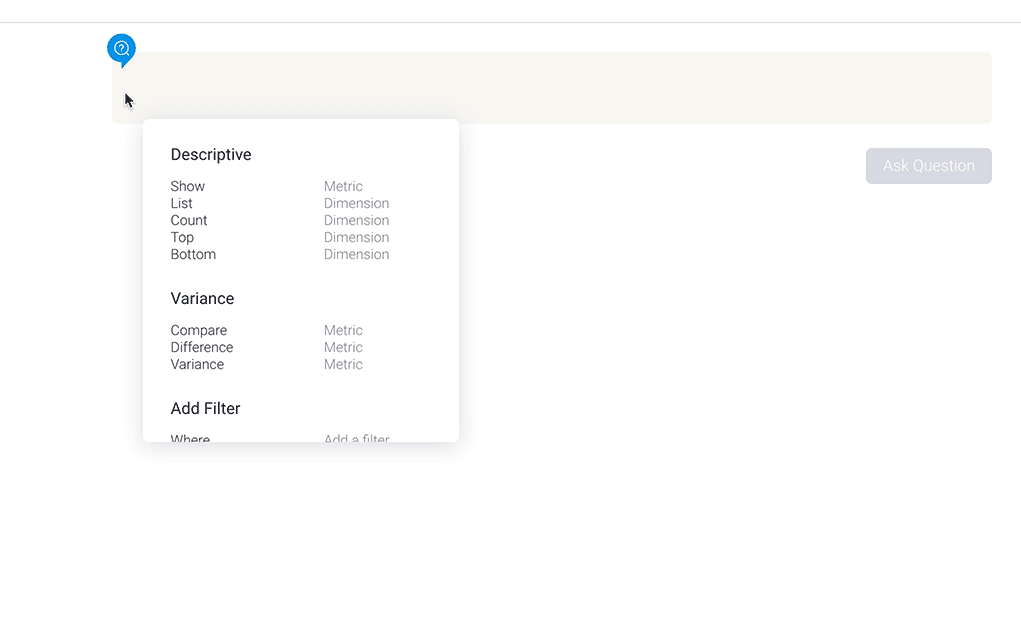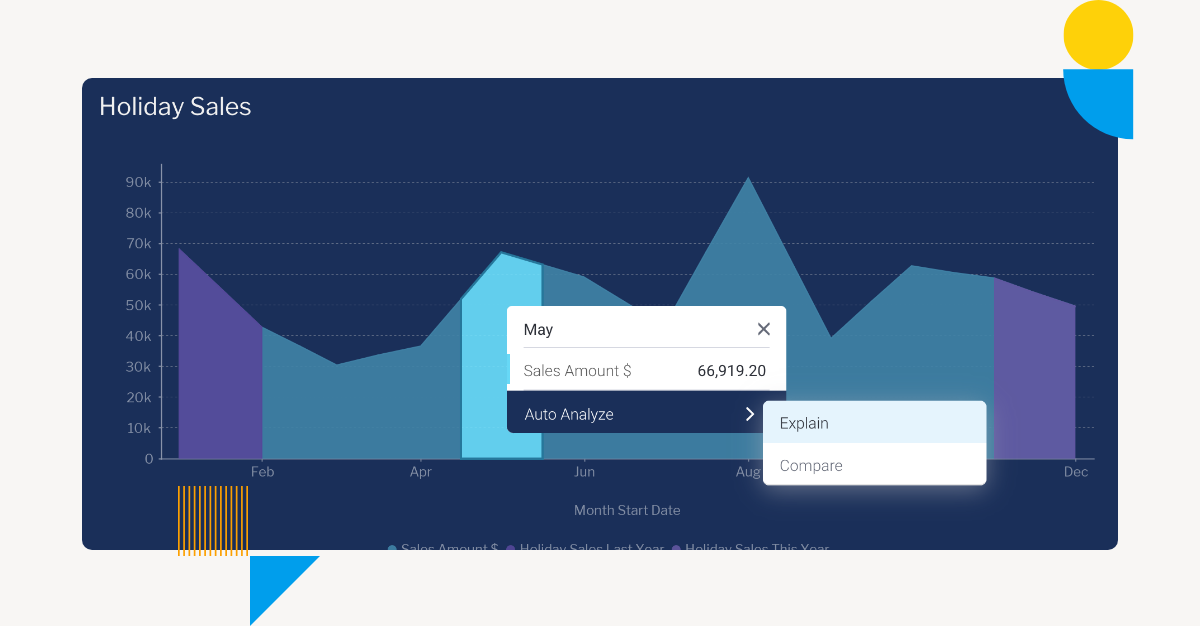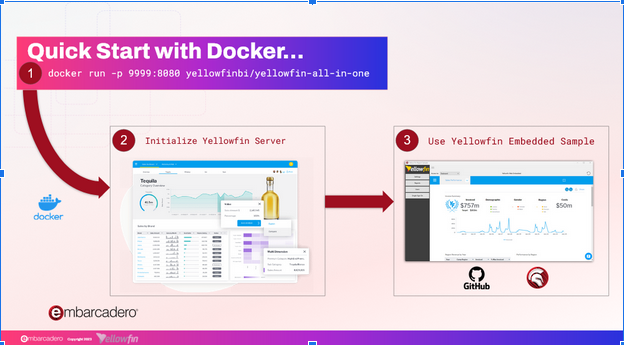Integrating business intelligence (BI) into your RAD Studio application is a great way to increase product stickiness, improve customer loyalty and unlock data-led insights for your end-users.
Also known as embedded analytics, having a suite of natively integrated BI tools in your software product opens up data access and insight discovery to your end-users as part of their workflow, helping them make business decisions and increasing the value of your software for their goals.
In this article, we discuss the benefits of integrating Yellowfin BI into RAD Studio VCL and FMX Applications and how to get started, as covered more extensively in our sister brand Embarcadero’s recent webinar, Adding Business Intelligence Analytics into RAD Studio Applications, which you can view on-demand by clicking the provided link.
Why embed BI and analytics into your RAD Studio application?
Before you assess a BI solution for your RAD Studio application, it’s important to understand the fundamental concept of what an embedded analytics platform is, and why so many businesses are striving to embed analytics into their software applications today (if you are already familiar with the benefits of adding a BI solution into your existing products, then you can skip down to the ‘Next Steps’ section).
Firstly, BI platforms enable the process of creating informed, timely and actionable decisions. Their purpose is to provide a way for users within your application to create data content - reports, data visualizations such as graphs and charts, and dashboards - to visually represent all of the most important information to your business in one summarized, easily accessible place.
BI platforms include multiple components for your application - typically:
- Mechanisms to connect to data sources
- Flexible APIs to enable BI content to be embedded directly into your applications
- Ability to capture the business rules about data, known as meta-data
- Ability to securely generate data queries, usually through a drag and drop interface
- Ways to present data queries - for example as reports, charts, dashboards and more
The most important benefit of embedded analytics is it makes data more available to end-users. By embedding reports directly into your application workflow (compared to running reports once a day or once a week as per traditional processes of the past), your app users can immediately see a report filtered against a specific client at the right time they are trying to make a decision.
With many BI vendors on the market, the main differentiators come down to further specialized features, such as the ability to automatically distribute reports, automate identification of insights using intelligent algorithms, natural language capabilities for asking questions of data, and machine-assisted analysis that explains identified insights for the user at just a click.
Why embed Yellowfin BI into your RAD Studio application?
Yellowfin is a sister brand of Embarcadero and a market leader in modern business intelligence and embedded analytics software. With our extensible API, you can integrate and white-label analytics into your RAD Studio software to elevate your reporting beyond traditional feature-sets, and quickly provide significantly valuable BI capability to your end-users, in their workflows, enabling them to make much faster business decisions.
For a thorough demonstration of Yellowfin’s embedded analytics suite and what it can bring to your RAD Studio application, check out our demo walkthrough video below.
In the next section, we will break down 3 of the most unique features and differentiators of Yellowfin BI - all of which you can embed into your RAD Studio application and get value from immediately.
Yellowfin-exclusive features for RAD Studio Applications
True self-service BI with Yellowfin Guided NLQ: Natural language query (NLQ) allows analytics users to ask a question of your data and get an answer, and is usually offered in BI tools as a free-text search box. However, this requires the user to have some knowledge of what they want to ask, and how to ask it. Yellowfin takes NLQ a step further with its Guided NLQ feature, which proactively guides the user through the process of asking a question of their dataset by automatically generating options as they type (do you want to compare metrics, or have a particular graph explained, etc). The generated answer is a best practice data-visualization and report, which users can then modify further by directly bringing it into a dashboard or report, or editing it further. Learn more about Yellowfin Guided NLQ.
Automated data discovery with Yellowfin Signals: Artificial intelligence is increasingly being used in analytics solutions to enhance the user experience and help people discover insights by automatically detecting and alerting businesses when statistically relevant changes occur in their datasets. Yellowfin’s Signals feature leverages AI to automatically identify outliers in data to help users proactively analyze and react to changes in performance as they happen, minimizing effort needed for manual monitoring and reducing human error in analysis. Discover more about Yellowfin Signals.
Machine-assisted insights with Yellowfin Assisted Insights: Manual analysis of data can sometimes take a long time, or otherwise is not an option for certain analytics users without extensive expertise, which is why the use of AI and machine learning (ML) capabilities in BI solutions is becoming increasingly prominent. One such use of AI and ML is in Yellowfin’s Assisted Insights feature, which helps users uncover correlations, patterns and trends in their data. With a click of a button, users can auto-analyze a dataset, asking for a comparison or explanation of a particular graph, chart or report, and immediately receive an answer in the form of best practice data visualizations and natural language text explanations. Learn more about Yellowfin Assisted Insights.
What are the benefits of embedding Yellowfin BI into RAD Studio?
For your RAD Studio application, integrating a robust business intelligence (BI) platform like Yellowfin into your product can unlock numerous business advantages (on top of having the aforementioned embedded BI capabilities), propelling you ahead in the market in several ways.
- Achieve faster ROI
- Win more deals and create competitive differentiation
- Create new revenue streams
- Save on development costs
Ultimately, integrating embedded BI with Yellowifn is not just a feature addition; it's a strategic move that empowers your product, unlocks new revenue streams, and optimizes your development resources. In the age of data, standing out by equipping users with the insights they need to succeed adds tremendous value to your product in an ever-evolving market.
Next steps: Getting started with trailing Yellowfin in RAD Studio
Yellowfin and its sister brand Embarcadero have endeavored to make it as simple as possible for you to get started with integrating Yellowfin into your RAD Studio application and trailing its many rich business intelligence capabilities with a number of free resources.
Firstly, Embarcadero’s latest webinar, Adding Business Intelligence Analytics into RAD Studio Applications, provides a detailed overview and live demonstration on embedding Yellowfin into RAD Studio applications, which you can watch on-demand and for free now.
Next, if you have RAD Studio 11.x (or later) installed, you can download the source code example for VCL and FNX using Yellowfin inside a Delphi application right now via Github (you can also see us use the source code in action in the webinar). These code samples can help you kickstart your integration of Yellowfin, and provide "ready to copy" backend logic that wraps up key Yellowfin API calls to rapidly integrate Yellowfin inside your existing applications. More importantly, you can start testing your Yellowfin integration immediately, just by using our provided docker instance below.
Read More: Deploy Yellowfin Using Docker And Connect it to Delphi Apps
Request a developer license for Yellowfin
Need more direct assistance? Connect with Yellowfin’s sales team and engineers today to get your free development license and advice on the best option for your RAD Studio and Yellowfin deployment.




